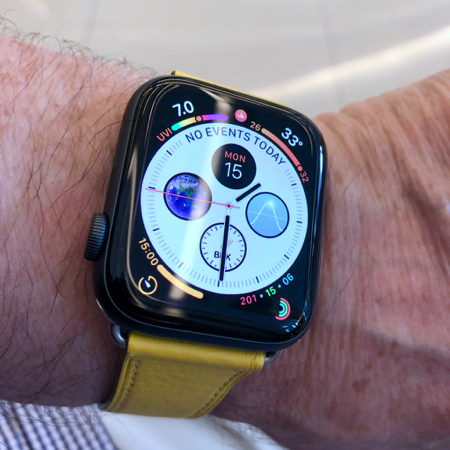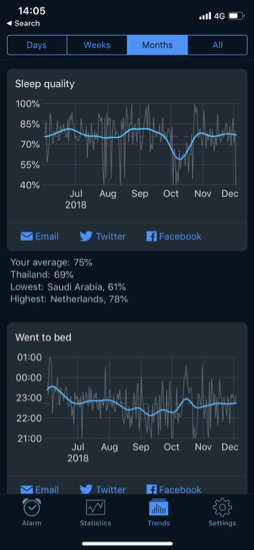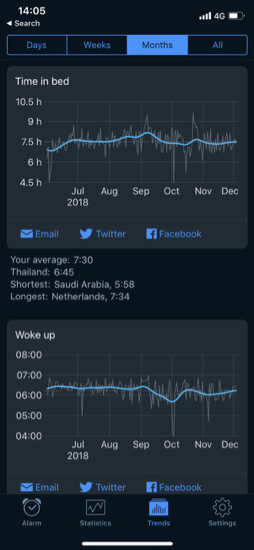|
|
Cassandra - With Positives of Health and IOT Devices Comes Potential Data Misuse for Users (1): The Value of DevicesBy Graham K. Rogers
In parallel there was considerably more interest in home technology, driven in part by the visions of movie-makers, even as far back as the Korda Brothers in The Shape of Things to Come. More recent movies including sophisticated automation include I Robot (Asimov), and Minority Report (Philip K. Dick - also Blade Runner, Total Recall, Paycheck and others). I should also mention the failed technology (for comic effect) in Terry Gilliam's Brazil (1984): the idea is there, but not the execution. In only a few years we have come a long way. I see one of the important moves here being Philipps with their automated Hue lighting system: one of the basics on which any technical home could be based.
Currently, the patient would need to attend a hospital where the urine would be tested, tying up nurses and lab staff. This would be followed by a consultation with the doctor, who would normally report that all was well and the patient would make a further appointment when the same process would be repeated. With a home test, the result would be sent to the physician. If there were some cause for concern, then an appointment could be made. As with other processes, home-testing could save time and money, while also signaling a problem that could then be dealt with by competent medical personnel.
For 2 weeks I restricted my evening intake and when I awoke each morning drew a small amount of blood and tested it using the G-Mate device that connected to my iPhone. This was not a HealthKit device, so the app did not automatically add the data to my Health app, but I was able to see a readout as I ran the test, rather than wait for a lab result. The figures were higher than I wanted, so after 10 days I went to a hospital where I was tested for Diabetes as well as Cholesterol, Lipids and other diet-related inputs. Blood sugar was OK, but Cholesterol and Lipids higher than normal. Having been given the warning through the home test, I was able to check at a lab and act on the results to change my diet. Later tests (every 3 months) were much improved. I added a Withings Blood Pressure device and much later a set of Nokia scales, so with input from the Apple Watch (heart rate and more) I have a good picture of ny day-to-day state. Rises and falls of weight, especially, allows me to make changes in order to compensate.
Another area we examine is the use of personal data. I am particularly critical of Google, but recent (and still-ongoing) revelations concerning Facebook, Cambridge Analytica and others were a gift, providing me with much teaching material. The use of data might also impinge on individuals some of whose data is created on IOS or medical equipment. With the growing reliance on devices, the amount of personal data online can be considerable, from credit cards, shopping trends to sharing fitness data with others (e.g Nike) and sending health data to online storage systems. My weight and blood-pressure checks are sent to Withings each day (they took back the company from Nokia); and they also glean other information from the Apple Health App (with my permission). Sleep data is sent to Northcube AB in Sweden, and my heart rate data is sent to Cardiogram: this is part of a long-term academic survey, using data from the Apple watch. I am keen to be a part of this for ways in which others may benefit. With each of these I have agreed to share data. This is partly for my convenience so that I can retrieve data of the device is not available for some reason. However, with all the personal data I must trust the organisations, but there is always the risk that data may be hacked or stolen. As I am an individual, the data may not be significant, but the data of thousands of I users will have a greater value.
There is a downside to this with a report on ProPublica (Marshall Allen) outlining the way an insurance company was able to monitor the CPAP breathing machine he used at night to help with his sleep apnea. The data was being sent to the insurance company as well as his doctor,the maker of the machine, and to the medical supply company that provided it. The data could be used by insurance companies to increase rates for those who need medical support.
A comment on Twitter (Michael Farrell) about the Sleep Number mattress suggested a lack of knowlege about the devices, although it is right to be concerned. A look at Terms & Conditions, does suggest that this is always On and would record data from anyone using the bed, and with any activity. The user signs up for this and the data includes, a "person's movement, positions, respiration, and heart rate while sleeping". At least with Sleep Cycle I only activate the app at the times I go to bed. As well as deep sleep and times I may get up during the night, if I snore (sometimes) it records that too. There is an option for online backup, which I keep Off.
Graham K. Rogers teaches at the Faculty of Engineering, Mahidol University in Thailand. He wrote in the Bangkok Post, Database supplement on IT subjects. For the last seven years of Database he wrote a column on Apple and Macs. After 3 years writing a column in the Life supplement, he is now no longer associated with the Bangkok Post. He can be followed on Twitter (@extensions_th) |
|


 While I had always been convinced of the value of home automation, my conversion to the importance of Health technology was confirmed when
While I had always been convinced of the value of home automation, my conversion to the importance of Health technology was confirmed when  Not long after speaking to Dr. Milani (I mean a couple of hours) I picked up a device in Bangkok for testing blood-sugar levels. The technology has been available for home testing for a while, but more recent devices work with smartphones. I had never tested my blood for this, although I know some with Stage 2 Diabetes. With my sugar intake, though it worthwhile.
Not long after speaking to Dr. Milani (I mean a couple of hours) I picked up a device in Bangkok for testing blood-sugar levels. The technology has been available for home testing for a while, but more recent devices work with smartphones. I had never tested my blood for this, although I know some with Stage 2 Diabetes. With my sugar intake, though it worthwhile.



